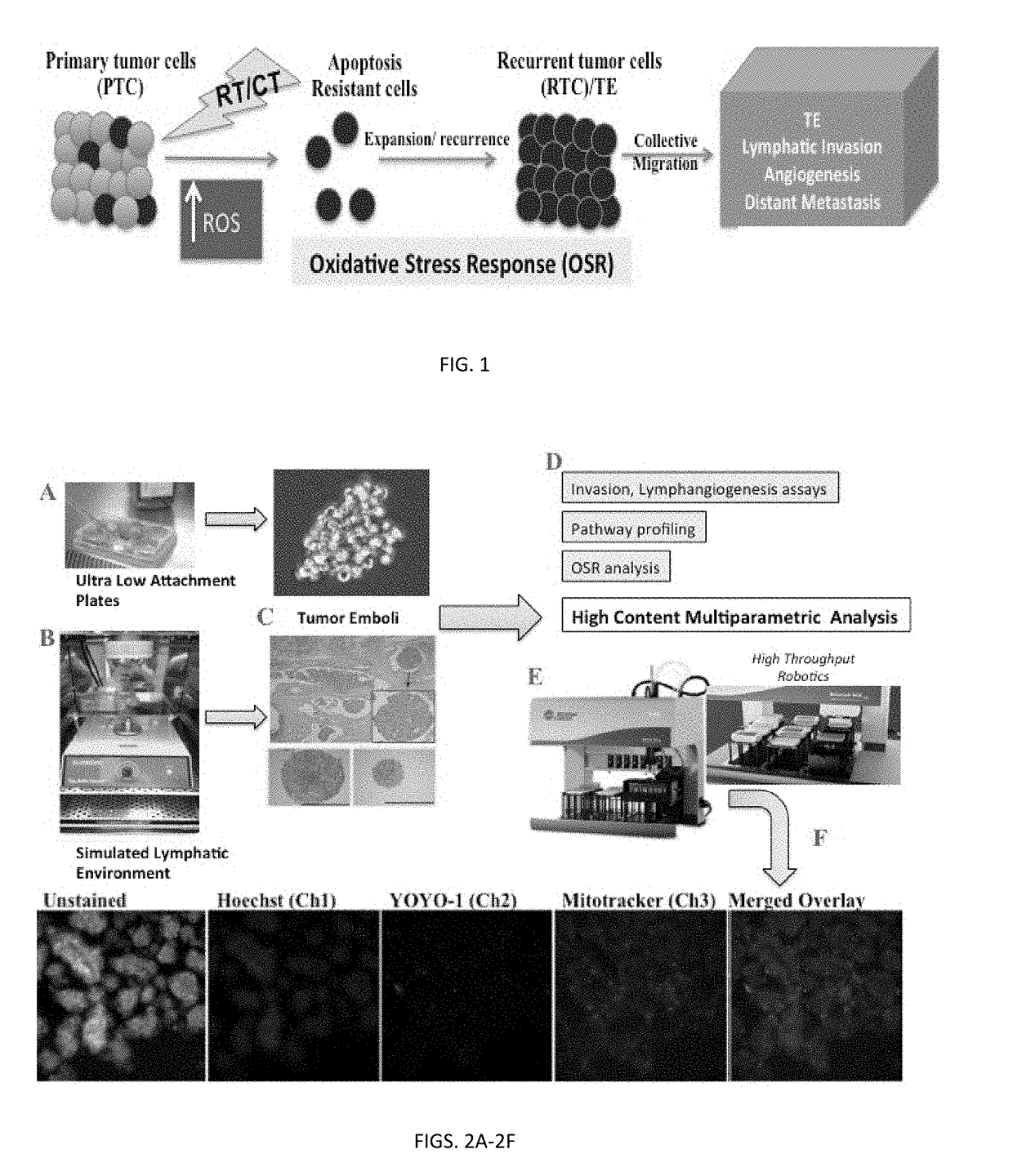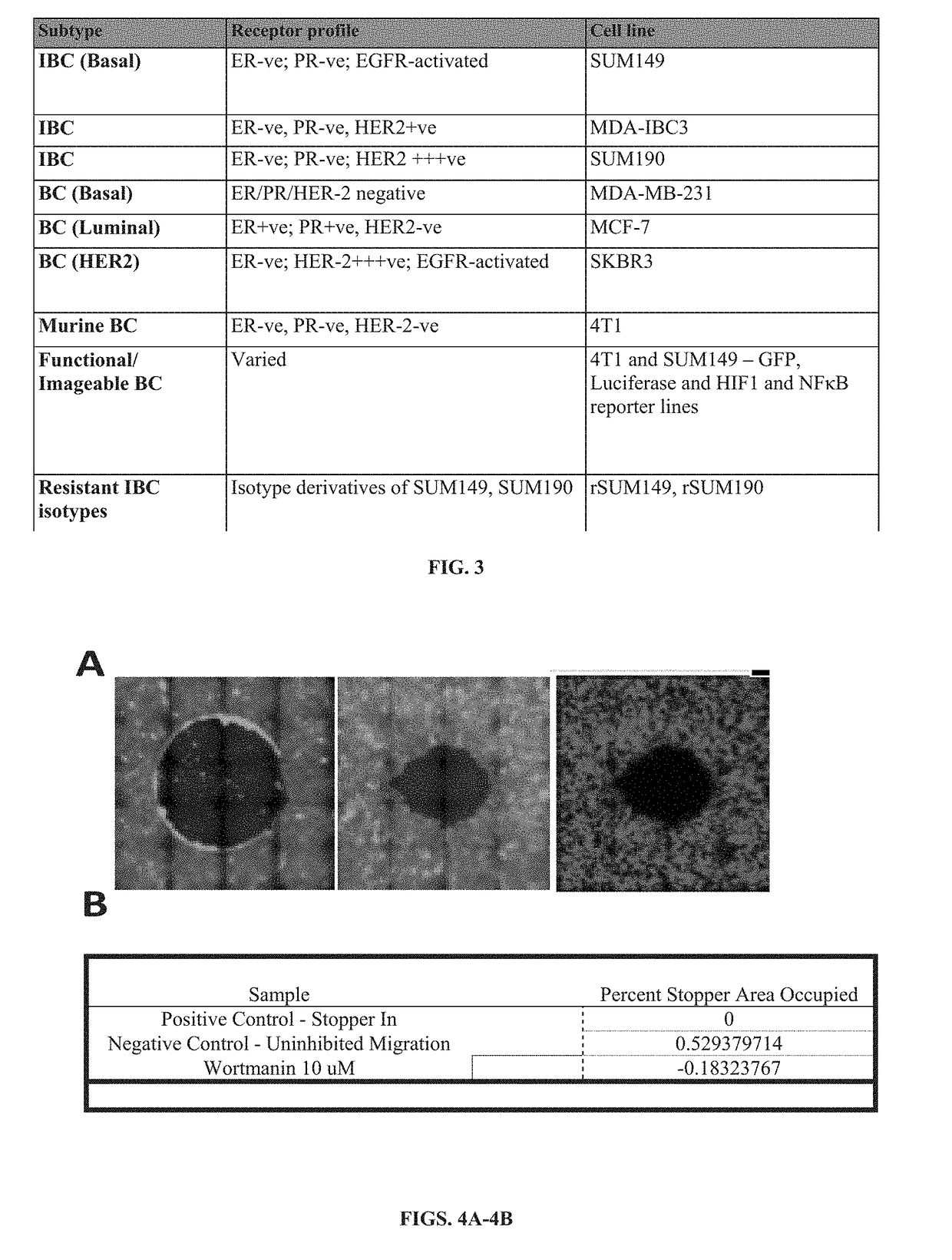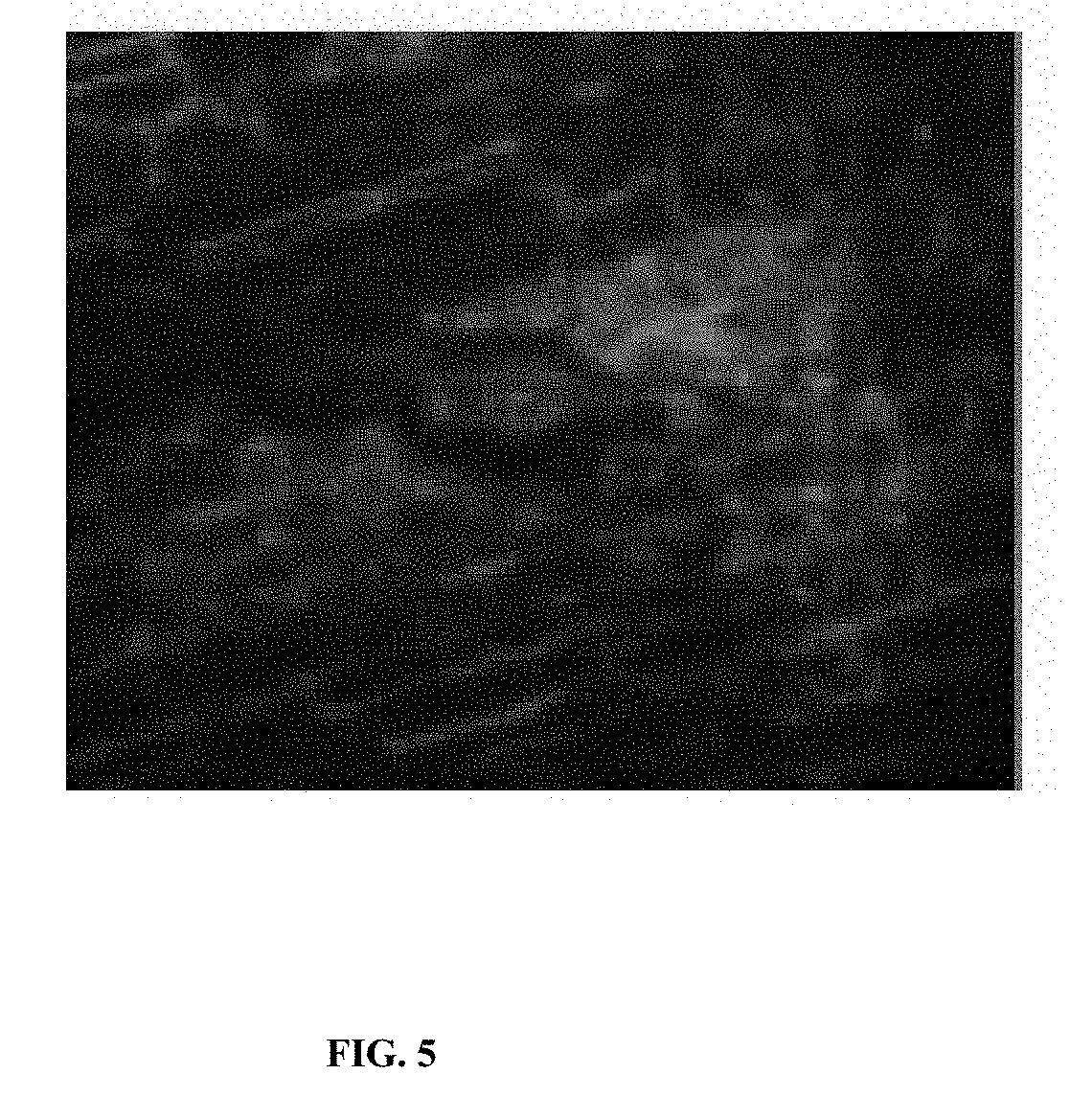Methods for Quantitative Analysis and Targeting of Inflammatory Breast Cancer Tumor Emboli
a breast cancer and tumor technology, applied in the field of quantitative analysis and targeting of inflammatory breast cancer tumor emboli, can solve the problems of few therapeutic options for ibc patients with metastatic recurrence, and current assays that do not quantitatively measure the cell morphology parameters of 3d spheroids
- Summary
- Abstract
- Description
- Claims
- Application Information
AI Technical Summary
Benefits of technology
Problems solved by technology
Method used
Image
Examples
example 1
References for Example 1
[0098]Alpaugh M L, Tomlinson J S, Shao Z M, Barsky S H. 1999. A novel human xenograft model of inflammatory breast cancer. Cancer research 59(20): 5079-5084.[0099]Lehman H L, Dashner E J, Lucey M, Vermeulen P, Dirix L, Van Laere S, et al. 2013. Modeling and characterization of inflammatory breast cancer emboli grown in vitro. International journal of cancer Journal international du cancer 132(10): 2283-2294.[0100]Mu Z, Li H, Fernandez S V, Alpaugh K R, Zhang R, Cristofanilli M. 2013. EZH2 knockdown suppresses the growth and invasion of human inflammatory breast cancer cells. Journal of experimental & clinical cancer research: CR 32: 70.[0101]Robertson F M, Bondy M, Yang W, Yamauchi H, Wiggins S, Kamrudin S, et al. 2010. Inflammatory breast cancer: the disease, the biology, the treatment. C A: a cancer journal for clinicians 60(6): 351-375.[0102]Robertson F M, Chu K, Fernandez S V, Mu Z, Zhang X, Liu H, et al. 2012. Genomic Profiling of Pre-Clinical Models of ...
example 2
Metastatic Dissemination in Inflammatory Breast Cancer
[0107]Effects of Oxidative Stress on Recurrent Tumor Cells Leading to TE Formation and Progression.
[0108]Using our novel, high content 3D TE in vitro models, we will (a) image and conduct quantitative assessment of the effect of oxidative stress stimuli on TE formation and individual cell health parameters in the TE; (b) characterize invasion, migration of individual tumor cells within the in vitro TE; (c) evaluate NFκB activation pathway expression in oxidative stress-induced survival signaling in recurrent tumor cells.
[0109]RTC / TE 3D Culture Model:
[0110]Therapy-resistant residual tumor cells evade programmed cell death / apoptosis and by clonal expansion give rise to RTC. In IBC, RTC form specialized tumor cell clusters, called tumor emboli (TE). These TE then migrate through the lymphatic system and spread to distant organs. A critical challenge is the characterization of individual cells that form TE to elucidate how they avoid...
example 3
ng the Effects of RT / CT-Mediated Oxidative Stress on Tumor Cell Invasion, Tumor-Vessel Interactions and Lymphangiogenesis on In Vivo BC Models
[0124]Not to be bound by any theory, but residual tumor cells often survive treatment through compensatory oxidative stress-mediated survival signaling and serve as reservoirs for tumor recurrence, invasion, and metastasis.
[0125]Breast tumor cells expressing NFκB or HIF1 reporter constructs will be implanted under murine window chambers in transgenic mice with fluorescent (different wavelength) lymph vasculature. This will allow simultaneous longitudinal imaging and quantification by in vivo high-resolution structural illumination or confocal-intravital microscopy of a) tumor initiation, b) regional metastasis c) dermal lymphatic invasion d) lymphangiogenesis, e) NFκB / HIF-1 expression, and f) oxidative stress response in RTC post-RT / CT.
[0126]This approach (Palmer, 2011) involves surgical implantation of a titanium frame to support a glass wind...
PUM
| Property | Measurement | Unit |
|---|---|---|
| area | aaaaa | aaaaa |
| time | aaaaa | aaaaa |
| diameter | aaaaa | aaaaa |
Abstract
Description
Claims
Application Information
 Login to View More
Login to View More - R&D
- Intellectual Property
- Life Sciences
- Materials
- Tech Scout
- Unparalleled Data Quality
- Higher Quality Content
- 60% Fewer Hallucinations
Browse by: Latest US Patents, China's latest patents, Technical Efficacy Thesaurus, Application Domain, Technology Topic, Popular Technical Reports.
© 2025 PatSnap. All rights reserved.Legal|Privacy policy|Modern Slavery Act Transparency Statement|Sitemap|About US| Contact US: help@patsnap.com



